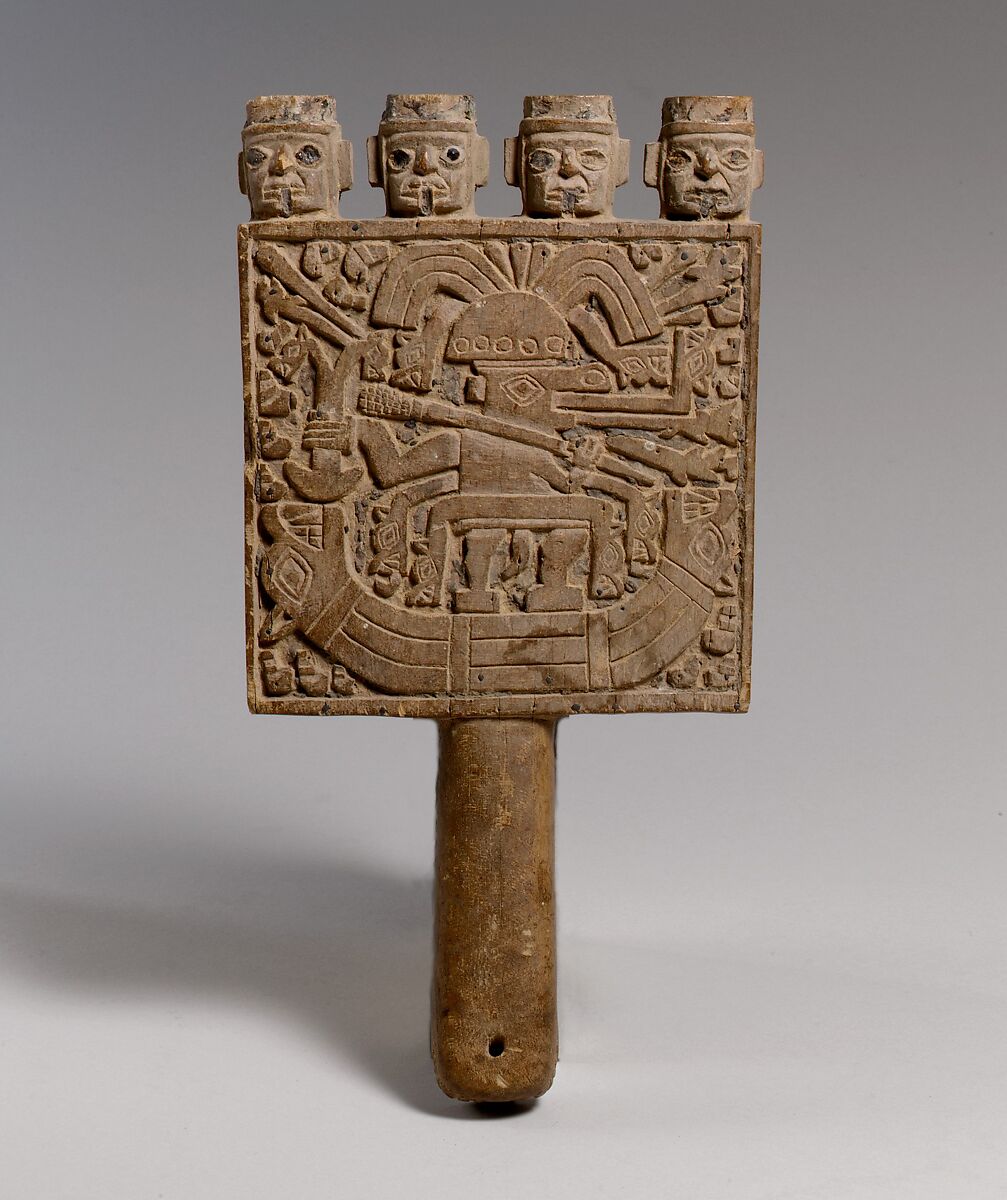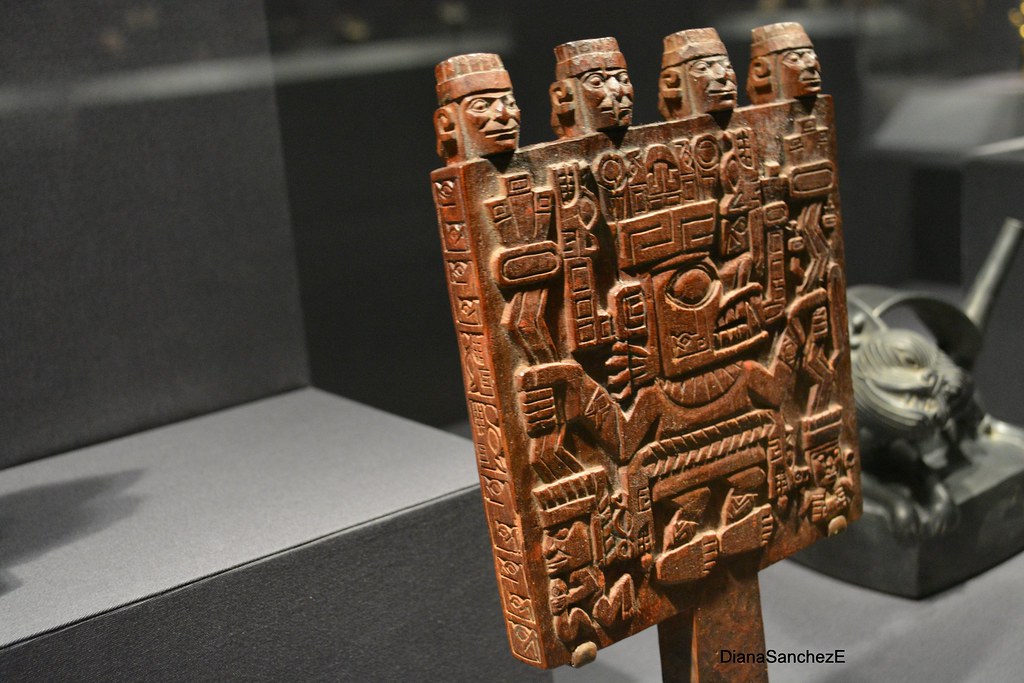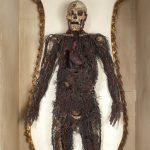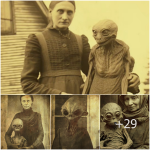A finely carved artifact from the Wari Culture in Peru, the Reed Boat Figure Mirror dates from 650 to 1000 AD.

In the annals of ancient Peruvian culture, the Wari civilization stands as a testament to artistic innovation and craftsmanship. Among the myriad artifacts left behind by this enigmatic culture, one particular object stands out: the Mirror with figure in a reed boat. Dating back to the period between 650 and 1000 AD, this intricately carved mirror offers a glimpse into the artistic sophistication of the Wari people and their reverence for symbolism and aesthetics.

Carved with remarkable detail and naturalism, the Mirror with figure in a reed boat exemplifies the Wari sculpting tradition. The figure depicted in the mirror is thought to represent a deity, mythical figure, or perhaps even a revered ancestor. The meticulous craftsmanship evident in the carving suggests a mastery of technique and a deep understanding of the materials used.
One of the most striking features of the mirror is the inlaid decoration adorning the figure’s eyes and headbands. Originally, these embellishments would have been crafted from semiprecious stones or shell, adding a touch of color and opulence to the mirror. The use of such materials highlights the Wari’s appreciation for beauty and their skill in working with a variety of mediums.

The back of the mirror frame reveals another intriguing detail: a shallow round cavity in the center, designed to hold the mirror itself. Made from materials such as pyrite, anthracite, or obsidian, the mirror would have served both practical and symbolic purposes. Mirrors held significant cultural significance in many ancient civilizations, often associated with concepts of reflection, enlightenment, and divination. In the case of the Wari mirror, it likely played a role in rituals or ceremonies, reflecting the spiritual beliefs and practices of the culture.
Unfortunately, the original mirror is now missing, leaving behind only the empty frame and the intricate carving that once adorned it. The absence of the mirror itself adds to the mystery surrounding this artifact, inviting speculation about its use and significance in Wari society. Was it used in religious ceremonies, reflecting the divine presence of the figure depicted? Or was it a symbol of status and power, reflecting the prestige of its owner?
Despite the loss of the mirror, the Mirror with figure in a reed boat remains a poignant reminder of the Wari civilization’s artistic legacy. Its intricate carving and symbolic imagery offer valuable insights into the cultural and spiritual beliefs of ancient Peru. As we continue to unravel the mysteries of the Wari civilization, artifacts like this mirror serve as windows into a world that continues to fascinate and inspire us.











